 |
 |
 |
| |
HCV infection in opioid dependent pregnant women
|
| |
| |
"Vertical transmission is the leading cause of childhood HCV"
"Vertical transmission of HCV occurs in 5-10% of pregnancies"
"Approximately 30% of OD women are newly diagnosed with HCV in pregnancy"
Reported by Jules Levin
AASLD 2014 Nov 7-11 Boston
Vinod Rustgi, MD
Thomas Starzl Transplant Institute
Elizabeth E. Krans, MD, MSc
Assistant Professor, University of Pittsburgh
Magee Womens Research Institute
Department of Obstetrics, Gynecology and Reproductive Sciences
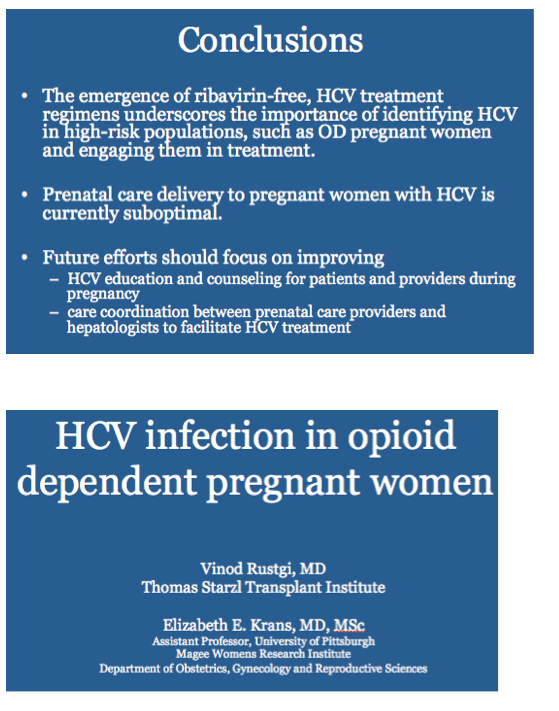
As a health services researcher, I am interested in the relationship between the use of the health care resources and patient outcomes.
In obstetrics, there is a particular patient population who has extremely poor outcomes and who also consumes a large quantity of health care resources.
Program abstract
Objective: Hepatitis C Virus (HCV) infection is prevalent among a growing population of opioid-using (OU) pregnant women. Prenatal care providers often serve as the primary care providers for these women. Illicit drug use and specifically, opioid use during pregnancy has increased dramatically over the last decade from 1.19 to 5.77 per 1,000 hospital births. Due to high rates of intravenous opioid use, 40-75% of OU pregnant women are HCV positive and over 4% are HIV positive. Automatic eligibility for Medicaid during pregnancy and the postpartum period also facilitates accessibility and affordability of HCV screening, testing and postpartum treatment options for many otherwise uninsured high-risk women. Our objective was to evaluate prenatal care delivery for opioid dependent (OD) pregnant patients with Hepatitis C Virus.
Methods: We studied a retrospective cohort of 702 opioid dependent pregnant women from 2009 to 2012 at the University of Pittsburgh. HCV was defined as a positive anti-HCV antibody test. Descriptive statistics were used to report prenatal care delivery characteristics regarding the evaluation of HCV for the population. All analyses were conducted with STATA® 12 (StataCorp, College Station, TX).
Results: Of 702 OD pregnant women, 309 (44%) had a diagnosis of HCV and approximately 28% of HCV infections were newly diagnosed in pregnancy. Liver function was evaluated in 90% of patients and 37% had abnormal results. Fewer than 25% of patients had viral load (HCV-RNA) testing, fewer than 16% had genotype testing and fewer than 16% had an immunization for either Hepatitis A or B. While 74% of patients were referred to hepatology, fewer than 20% attended the consultation. Finally, fewer than 2% of OD pregnant women received HCV treatment within 1 year following delivery
Conclusions: Recent improvements in the effectiveness and tolerability of HCV treatment regimens underscore the importance of identifying HCV in high-risk populations such as OD pregnant women, and engaging these patients in treatment. Prenatal care delivery to pregnant women with HCV is currently suboptimal and efforts to improve HCV education and counseling for patient and providers, care coordination between prenatal care providers and hepatologists to facilitate HCV treatment for high-risk, substance-using pregnant women is warranted.
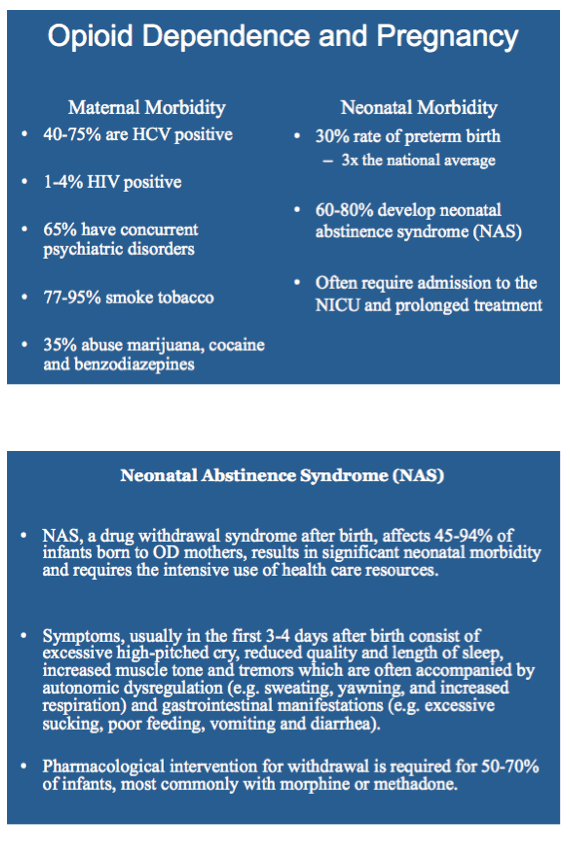
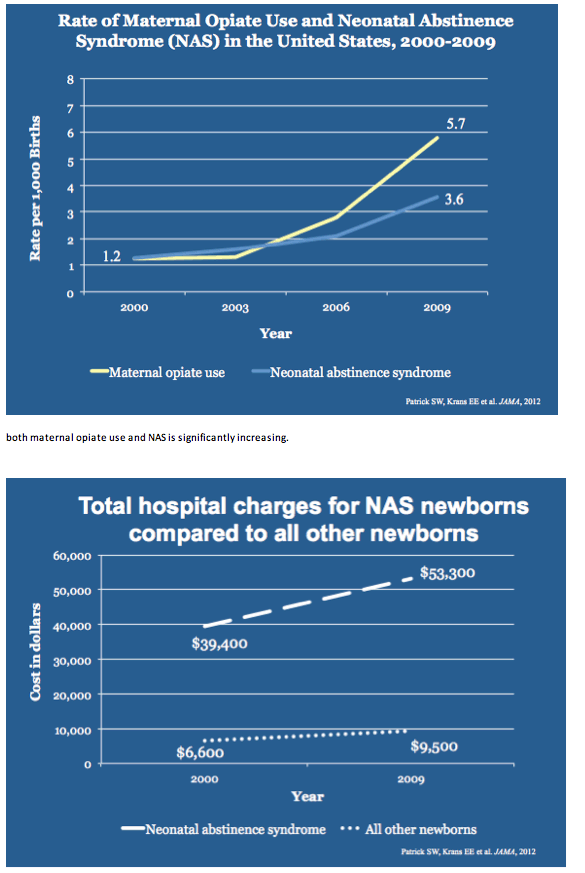
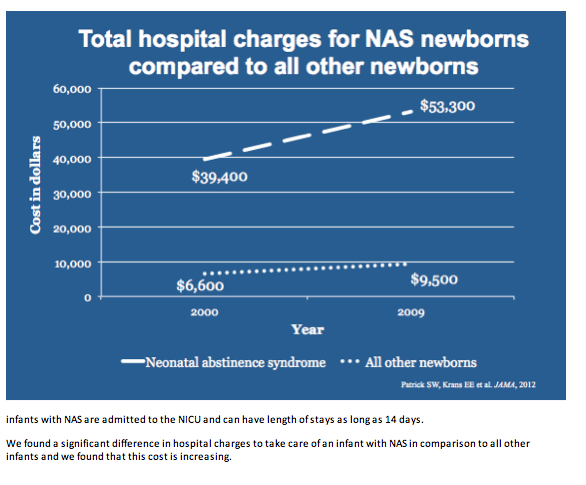
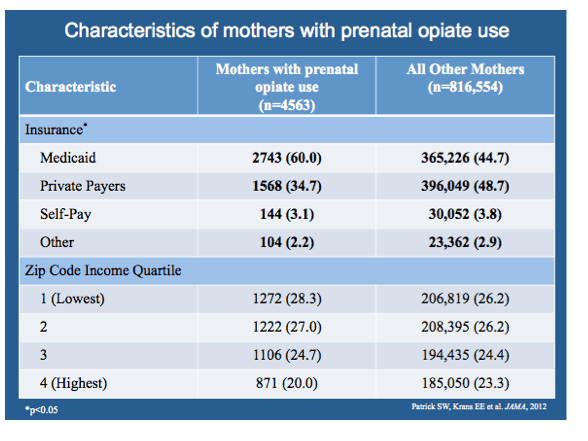
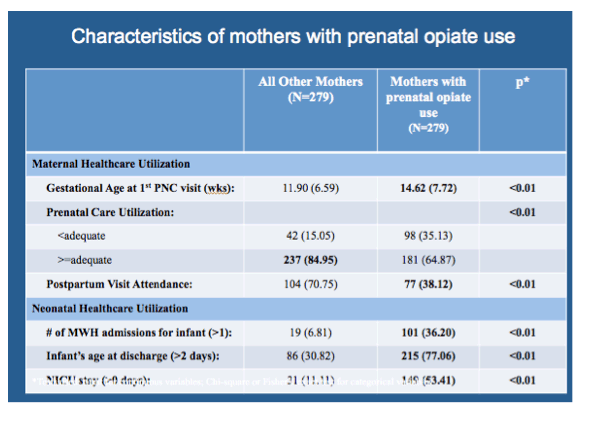

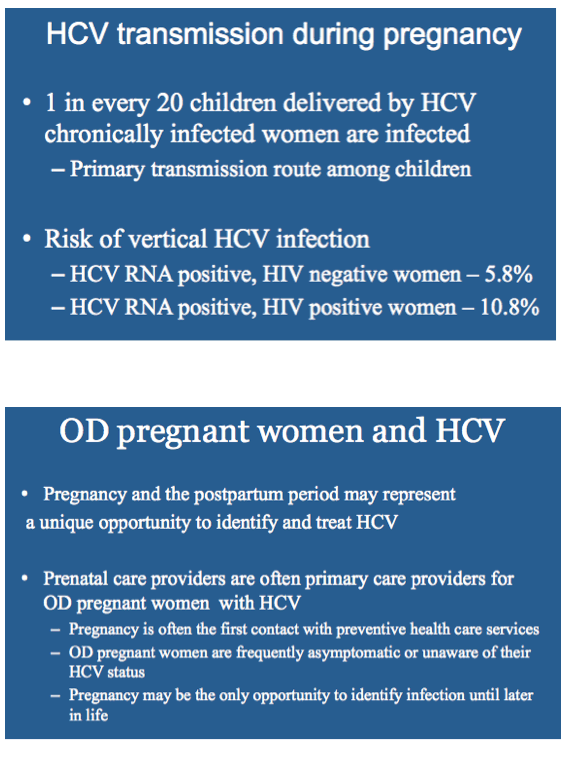

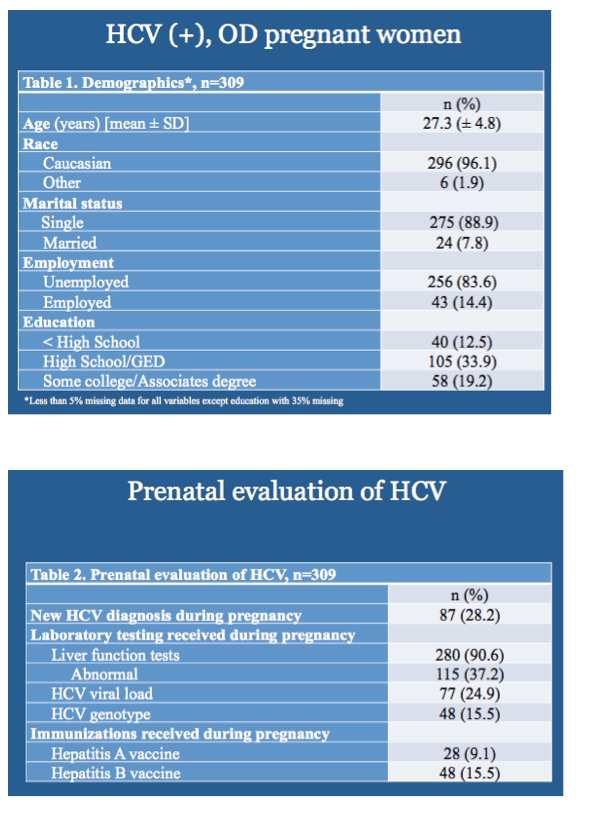
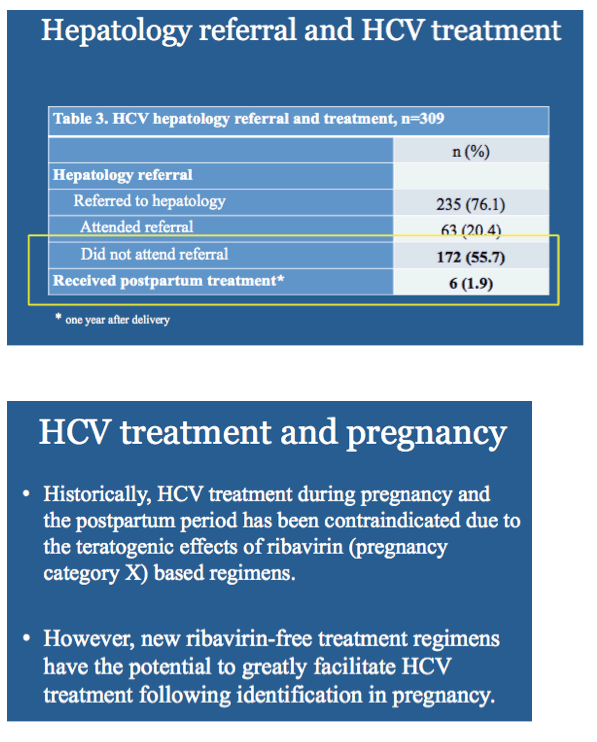
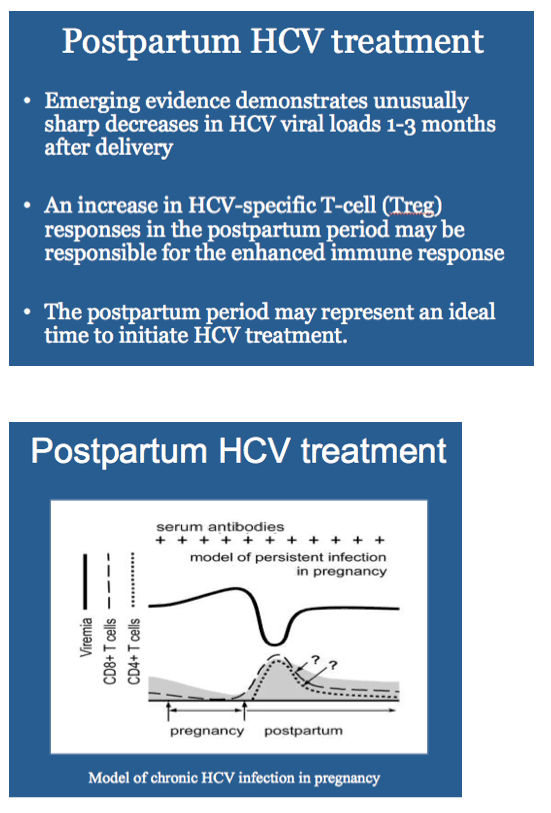
|
| |
|
 |
 |
|
|